Charles Wall: Grapevine’s Indiana Jones
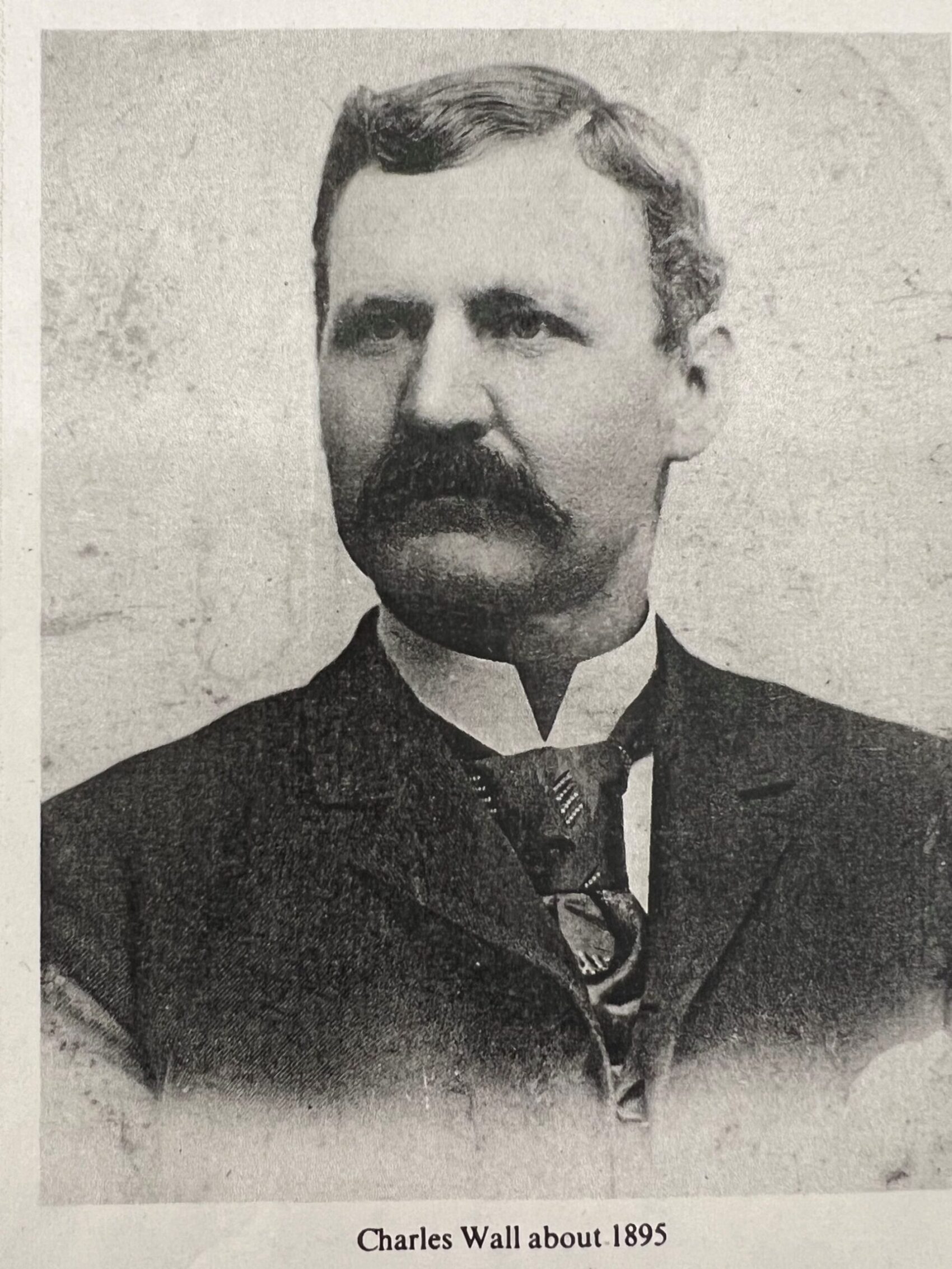
You may be familiar with the fictional move character Indiana Jones, played by actor Harrison Ford, who became involved in various, sometimes hair-raising adventures around the world. The small community of Grapevine, Texas can claim title to somewhat the same type of individual in the person of Charles “Charlie” Wall, who left home in the Pleasant Run Community about 1876 and returned in the mid-1890s. Few documents exist to provide evidence of Charlie’s travels; some evidence is anecdotal; some sources contradict each other, and some are plain incorrect. In fact, he refused to tell his story for twenty-five years afterward because he was certain that nobody would believe him. Nevertheless, Charlie’s story demonstrates how the evidence we have allows us to understand how an ordinary resident of a small Tarrant County community experienced a wider and wilder world during the late nineteenth century.
Charles Wall was born in Madison Co., Arkansas on August 30, 1860, the third son of Andrew Berry and Harriet (Martin) Wall. The Walls moved to Tarrant Co. and established a farm on Pleasant Run Road south of Big Bear Creek near the Pleasant Run community. According to his biographical entry in the book Grapevine Area History (Dallas, TX: Taylor Publishing Co., 1979) written by his daughter Martha Katherine (Wall) Cluck, as a youth Wall had “a wayward and wandering disposition” and “a desire to see the world.” Combining these tendencies with “dictates from a stern father,” he decided to leave home as a young teenager with sixteen dollars he had saved from picking cotton and selling pecans.
Go (to the Wild) West, Young Man
He apparently stayed in Fort Worth for a short time before heading out to the Llano Estacado (Staked Plains) to hunt buffalo for two years and then followed a herd of cattle to Dodge City, Kansas. The first documentary evidence places him in Lincoln County, New Mexico in April 1881. He was soon caught up in what was called the Tularosa Ditch War between 1873 and 1882. This conflict had to do with water rights over use of the Tularosa River, which was the only source of water for the Mexican settlement in Tularosa, a community in Doña Ana County, a few miles south from its border with Lincoln County. Conflicts developed between residents and incoming settlers wanting to develop dams and canals to irrigate property. Even though residents’ rights had been protected by an 1866 US statute, trouble was always present to some degree.
The Tularosa Ditch War
By early 1881, workers on James West’s ranch, five or six miles east of Tularosa (now Cottonwood Spring), were taking more water from the river than residents could tolerate. On April 18 the residents asked Deputy Sheriff Cruz Padilla to serve papers on the workers. Padilla encountered John Copeland and a young boy, who, backed by other workers, claimed the deputy had no authority because he was from neighboring Doña Ana County and the workers were in Lincoln County. Copeland had been a “buffalo soldier” (African-American) with the 9th Cavalry at nearby Fort Stanton. The sheriff ignored the claim and returned with a posse of three men, intending to arrest them. On arrival, the posse found Charlie Wall and Alexander Nunnelly trying to irrigate an alfalfa field close to the acequia, a community-operated watercourse used in Spain and Spanish colonies in the Americas for irrigation. Even though Padilla was a Doña Ana County, sheriff, he told them they were under arrest and would be taken dead or alive. Wall turned to run and was twice wounded when the posse opened fire, but three more men came to Wall’s and Nunnelly’s aid and in the ensuing gunfight the entire posse was taken down. Wall’s two wounds were not considered to be dangerous.
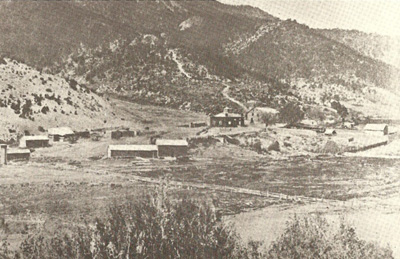
When news of the event arrived in Tularosa, the Justice of the Peace apparently declared that no arrests should be made, only that anyone using the water should be taken down. Wall and Nunnelly had escaped to a sawmill owned by dentist Dr. Joseph Hoy Blazer, who also operated a general store, near the Mescalero Indian Agency in Lincoln County. When the twenty men from Tularosa arrived, Dr. Blazer told them that Wall and Nunnelly had already surrendered to Deputy Sheriff William L. Goodlett of Lincoln County and would be examined the next day. Sheriff Goodlett took the pair to Las Cruces where Judge Warren Bristol set their bail at $1,000 each, after which time they returned to Lincoln.
Charlie Wall, Meet Billy the Kid
The county had just bought the building serving as the courthouse but had not yet built the jail, so prisoners were held upstairs. As trusties Wall and Nunnelly were prisoners who were given special privileges or responsibilities in return for good behavior, and as such, were allowed by Sheriff Pat Garrett to keep their guns and sleep there on the second floor (Fig. 2). They were also allowed to take their meals at the Wortley Hotel across the town’s main street. As fate would have it, Charlie Wall found himself in company with Henry McCarty, alias William H. Bonney, alias Billy the Kid (Fig. 3), who was awaiting execution on May 13, 1881 for murdering Sheriff William J. Brady on April 1, 1878.

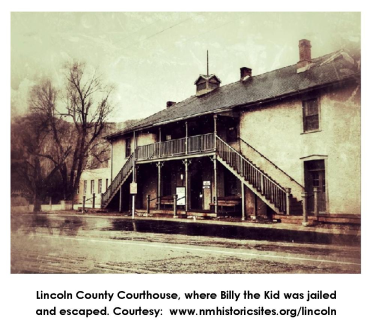
Around five o’clock on April 28, Wall and four other prisoners were eating at the hotel for dinner when Billy escaped, killing two lawmen, James W. Bell and Robert A. Ollinger. Wall was one of the five prisoners who witnessed the shooting of Ollinger. Billy the Kid’s story is a complicated one but Wall may have been one of the many people known to have empathized with the Kid.
After Billy’s escape, the trusties were transferred to the Fort Stanton guardhouse. However, the acting fort physician Francis H. Atkins noted that because the men hadn’t been able to bathe or change clothes, they had contracted lice, which Atkins did not want to spread to the military prisoners. So Wall and Nunnelly were returned to Lincoln County authorities.
The outcome of the August 1881 trial of Wall and Nunnelly is not known because the district court record books were later removed from the courthouse and not returned. However, the lack of entries in remaining records, as well as the fact that Wall was in Las Cruces in 1882, seem to indicate that charges had been dismissed.
Home on the Ranch
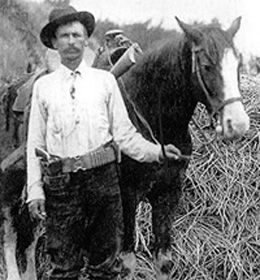
While in New Mexico, Charlie Wall became acquainted with Charles Angelo Siringo (Fig. 4), a cowboy, detective, bounty hunter, and agent for the Pinkerton National Detective Agency during the late 19th and early 20th centuries. He was first authentic cowboy autobiographer, and his books helped popularize the romantic image of the American cowboy. In one of his books, Siringo wrote that he was in Las Cruces in 1882 and looking for a ranch site. He recalled that Charlie Wall recommended Dog Canyon at the foot of the Sacramento Mountains, and since Wall had to ride to Fort Stanton, which was just outside Lincoln, he rode with Siringo to check out the water supply at the canyon. They left Las Cruces through the San Augustine Pass, traveling many miles to Dog Canyon by way of La Luz, up Tularosa Creek, and South Fork, while Wall gave his account of Billy the Kid’s escape in 1881. After arriving at Fort Stanton in Lincoln County, they parted ways.
On February 14, 1883 Wall was one of four witnesses to John N. Copeland’s intention to provide final proof in support of Copeland’s public land claim at the land office in La Mesilla. This John Copeland had been a sheriff of Lincoln County in 1878.
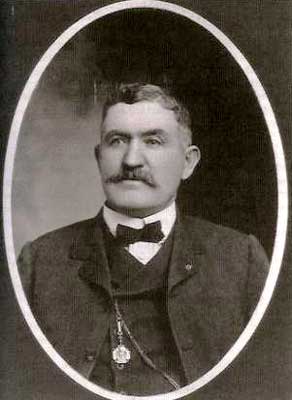
The week after Wall witnessed Copeland’s intention at the land office, he fell ill with what may or may not have been smallpox while at the post trader’s store at Fort Stanton. He was hastily taken back to John W. Poe’s cattle ranch on Eagle Creek (Poe secured this land in the spring of 1882) where he had been working as a cowboy, and the store was closed for a few days until it could be thoroughly cleaned. Fortunately Wall recovered from his illness. After working for Poe (Fig. 5), over the next few years Charlie Wall was known to have been a chief herder at several ranches in Doña Ana and Lincoln Counties.

By December 1883 Wall was working at Henry Milne’s Pecos Ranch in Lincoln County. In 1884 he was the foreman of the Little Hat Ranch, located near the Five Springs which was on the east slope of the Organ Mountains. One of Wall’s subordinates was Burton C. Mossman, who was just learning the trade of a cowboy (Fig. 6). Mossman, who had lived in Roswell, later became a great cattleman and founding captain of the Arizona Rangers. Mossman later recalled that Charlie warned him of the dangers of Mossman’s hot temper; in fact, Mossman voluntarily left that ranch a year later because his temper started to flare when he began having issues with other ranch workers that might have resulted in bloodshed.

Wall had also been foreman at the Benjamin E. Davies and Morris Lesinsky San Augustine cattle ranch and in early September 1885 he had sent notices throughout the area regarding the loss of two horses from that ranch the previous June. In mid-April 1885 he became boss herder for John H. Riley (Fig. 7) at his La Cueva ranch. Wall apparently had a reputation as a good worker because the Rio Grande Republican of May 2, 1885 congratulated Riley on selecting Wall as foreman. Wall also worked at Riley’s Two Circle Ranch. However, by May 16, 1885 he had to go to Roswell, and by mid-August 1885 Wall was working on Max Goldenberg’s ranch northeast of Las Cruces. By April 1888 he was working on one of Meyer Halff’s New Mexico ranches.
Gold Fever
The last documented evidence of Charlie’s travels is an article in The Santa Fe Daily New Mexican newspaper dated July 31, 1890, stating that he was assistant foreman at an unnamed Colorado mine. Mrs. Cluck claims that a letter dated July 5, 1888 revealed that he was working in the “Virginia Mine” in Ouray, Colorado. Others place him in either in the Rico or Cripple Creek Mining Districts in Colorado. From this point forward, with no evidence given, he was said to have gone gold mining in Alaska, worked in an Oregon logging camp, served as a Royal Canadian Mounted Policeman, and finally to have sailed to South America, where he had been told there was gold waiting to be mined. He purportedly journeyed to Bolivia where he claimed to have discovered a vein estimated to assay $50,000 to the ton. Supposedly, greedy officials got word of this and he was imprisoned, but managed to escape after burying ten gold bricks weighing sixty ounces each in a nearby cemetery. His apparent last stop was another mining district, this time in Baja California.
Gone (Back) to Texas
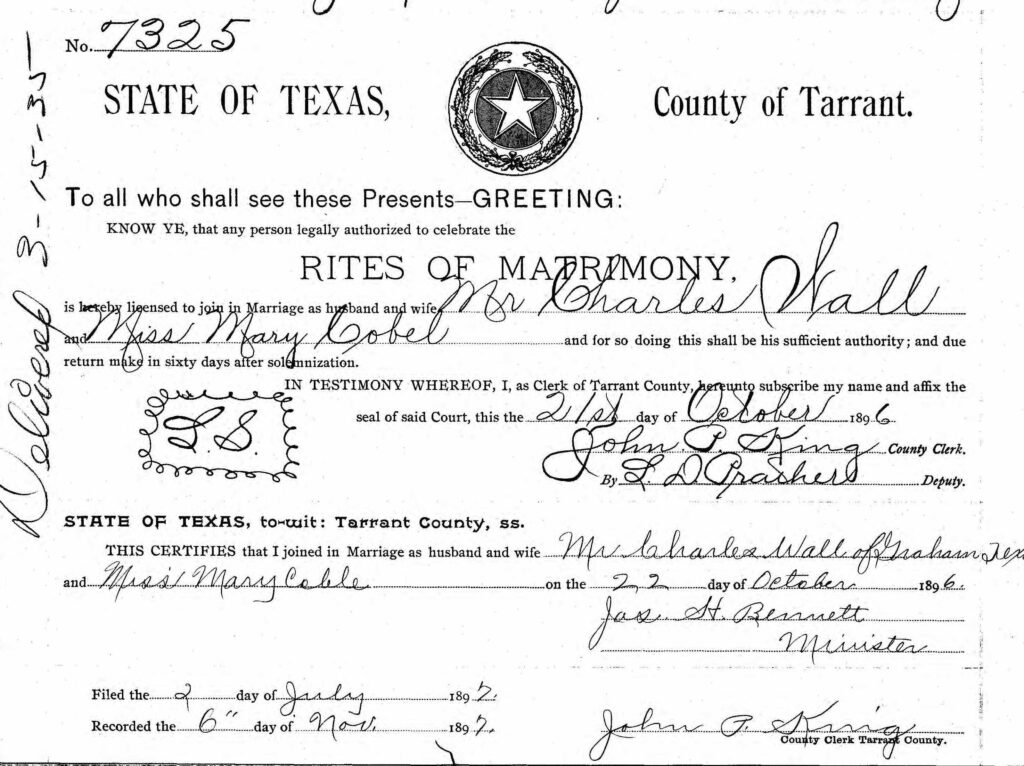

Upon returning to Texas, Wall married Mary Coble in Grapevine on October 22, 1896 (Fig. 8) but refused to tell his story for many years afterward because he was sure nobody would believe it. The Roswell Daily Record of May 21, 1909 welcomed his return to that city on business in 1909; he had previously traveled to New Mexico on business in 1903. Finally in early 1922 he engaged G. T. Bludworth (Fig. 9), then superintendent of South Fort Worth schools and former owner of Grapevine College (1900-1906), to write it. Bludworth published it as The Gold Brick (Boston: The Christopher House, 1933), which unfortunately reads like a novel. The story is compressed for the sake of space, does not include most of the events for which we have documentation, and all the characters mentioned have fictitious names – even Charlie Wall. Bludworth also claimed that Wall considered an expedition to recover the gold, but sadly, before he could relate the full story, he died on April 15, 1922 of a broken neck after falling from a moving tractor that then ran over him (Fig 10).
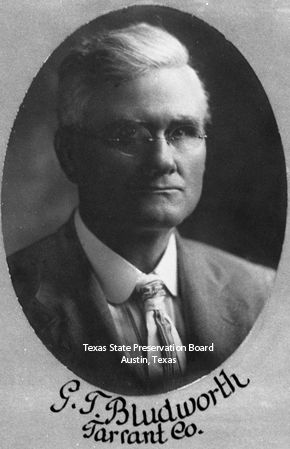
Unfortunately the opportunity to tell a factual true-adventure story was passed over. However, Charlie Wall’s story made enough of an impression to allegedly cause one person to take personal advantage of it. On February 5, 1934, William Kennedy Rogers was arrested on charges by postal inspectors of using the postal system to defraud. Postal authorities claimed that he used the newspaper article announcing publication of the book and the book itself to raise money via mail to finance his own expedition to locate the site where the supposed gold bricks were buried. Wall was said to have given Bludworth a map showing the site. Rogers posted a $2,500 bond but was no-billed about three weeks later by the federal grand jury, which found no evidence of the crime of which he was accused.
Stories of the lives of ordinary people like Charles Wall, living in extraordinary times, can only be told because the documentation exists. And when and where it exists, we tell and preserve these stories because we can – and more importantly – because we should. ![]()



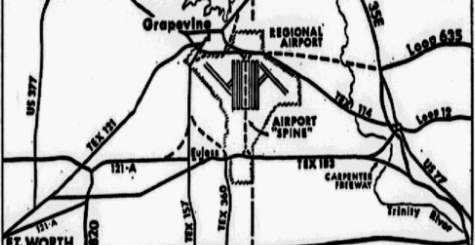

Recent Comments